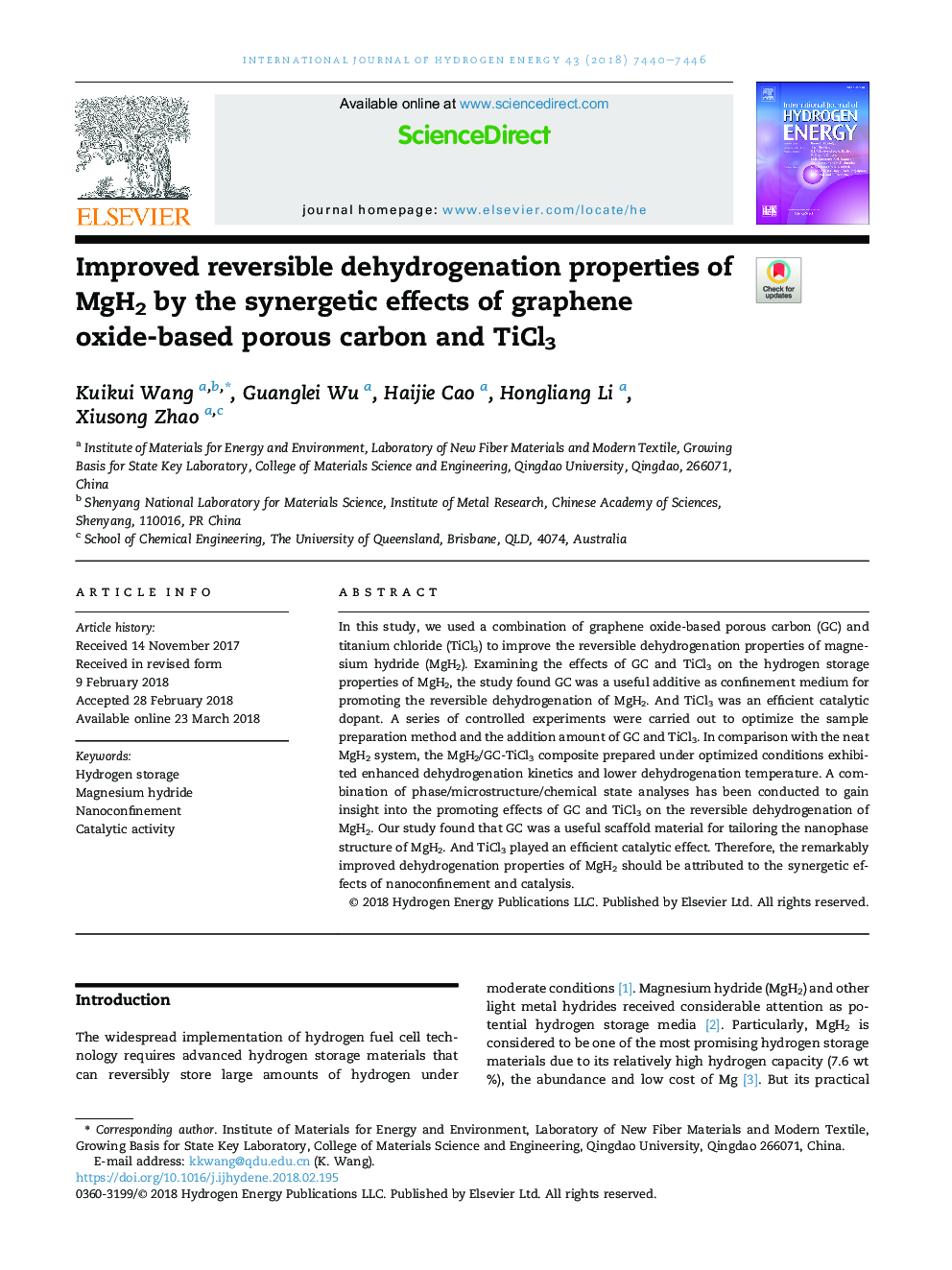| Article ID | Journal | Published Year | Pages | File Type |
|---|---|---|---|---|
| 7706579 | International Journal of Hydrogen Energy | 2018 | 7 Pages |
Abstract
In this study, we used a combination of graphene oxide-based porous carbon (GC) and titanium chloride (TiCl3) to improve the reversible dehydrogenation properties of magnesium hydride (MgH2). Examining the effects of GC and TiCl3 on the hydrogen storage properties of MgH2, the study found GC was a useful additive as confinement medium for promoting the reversible dehydrogenation of MgH2. And TiCl3 was an efficient catalytic dopant. A series of controlled experiments were carried out to optimize the sample preparation method and the addition amount of GC and TiCl3. In comparison with the neat MgH2 system, the MgH2/GC-TiCl3 composite prepared under optimized conditions exhibited enhanced dehydrogenation kinetics and lower dehydrogenation temperature. A combination of phase/microstructure/chemical state analyses has been conducted to gain insight into the promoting effects of GC and TiCl3 on the reversible dehydrogenation of MgH2. Our study found that GC was a useful scaffold material for tailoring the nanophase structure of MgH2. And TiCl3 played an efficient catalytic effect. Therefore, the remarkably improved dehydrogenation properties of MgH2 should be attributed to the synergetic effects of nanoconfinement and catalysis.
Related Topics
Physical Sciences and Engineering
Chemistry
Electrochemistry
Authors
Kuikui Wang, Guanglei Wu, Haijie Cao, Hongliang Li, Xiusong Zhao,
